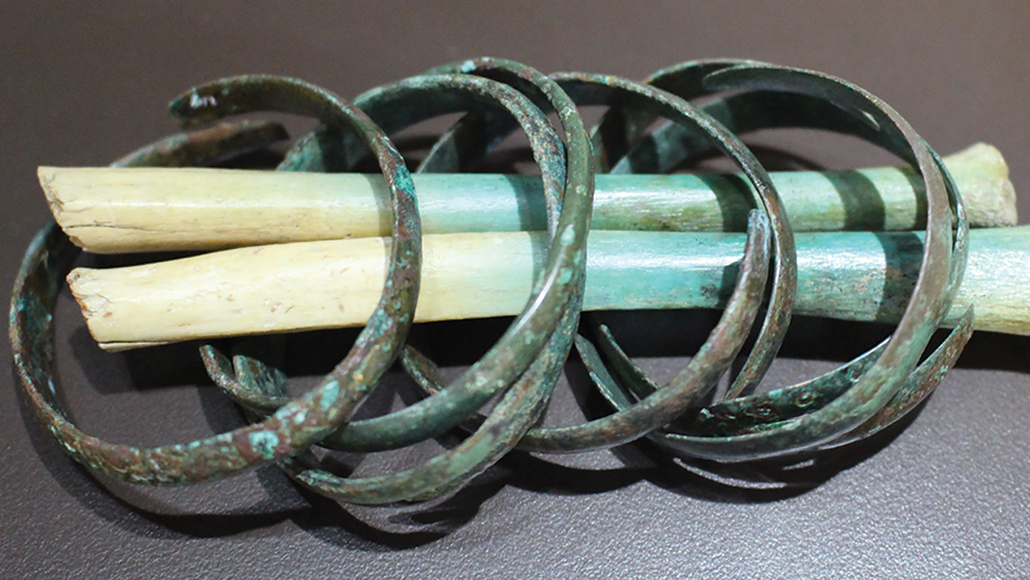Bones from an Iron Age massacre paint a violent picture of prehistoric Europe
Unburied victims and abandoned jewelry suggest a power struggle rather than plunder

A new analysis of ancient remains suggests that a violent massacre occurred at a site in what’s now Spain at least 2,200 years ago. Scientists found this amputated forearm with five copper-alloy bracelets still attached.
T. Fernández-Crespo, A. Llanos, J. Ordoño, R. J. Schulting, © Antiquity Publications Ltd, 2020







